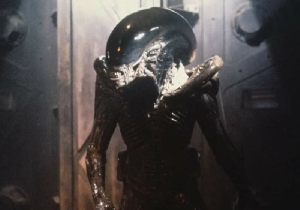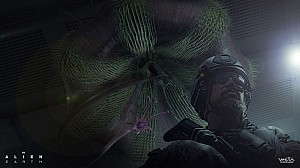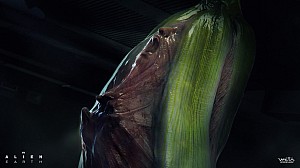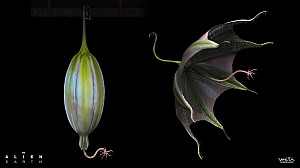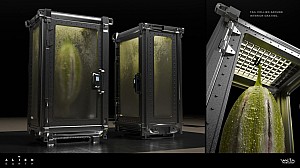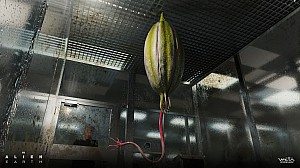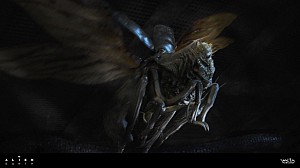This post was published by a guest. The views expressed are those of the author and do not necessarily reflect the views of alien-covenant.com.
In the vast expanse of science fiction, few settings are as memorable or menacing as those in the Alien franchise. While the Xenomorph is the undisputed star, the terror of the films is amplified by the spaces it inhabits. The franchise’s genius lies in its use of architecture as an active participant in the story: a silent character that communicates theme, tone, and the characters’ psychological state. The environments are designed to make the audience feel as trapped and vulnerable as the protagonists.
Analyzing this environmental storytelling is a rich field for film and design students. The thematic depth is significant. One could argue that a writing service like DoMyEssay could write an essay on the corporate critique embedded in the Nostromo’s design alone. From the industrial labyrinth of the Nostromo to the corrupted colony of Hadley’s Hope and the decaying monastery of Fury 161, the architecture tells a story of human ambition being consumed by a primal, biomechanical horror.
The Nostromo: The Claustrophobic Industrial Coffin
Ridley Scott’s Alien (1979) introduced the concept of the “used future.” The USCSS Nostromo is not a sleek starship but a “space trucker” vessel: a grimy, utilitarian, and deeply claustrophobic refinery. Its design is a masterclass in tension building. The ship is a labyrinth of narrow, dimly lit corridors, steaming pipes, and cramped ventilation shafts. This industrial design serves two narrative purposes:
- It grounds the world in a relatable reality. The blue-collar crew complains about bonuses and eats in a messy canteen. The ship feels lived-in and functional, making the intrusion of the alien all the more jarring.
- It forms the perfect hunting ground. The ship’s tight spaces offer no escape and endless hiding places for the Xenomorph. The architecture itself becomes an antagonist, trapping the crew with their predator.
This human-made space is starkly contrasted with the Giger-designed Derelict Ship found on LV-426. Its architecture is wholly alien: organic, skeletal, and unsettlingly biomechanical. The transition from the familiar, angular corridors of the Nostromo to the curved, bone-like halls of the alien ship is a visual descent into cosmic horror, signaling that the crew has stumbled into a realm where human rules do not apply.
Hadley’s Hope: The Violation of a Corporate Utopia
In James Cameron’s Aliens (1986), the setting shifts from a single ship to a terraforming colony, Hadley’s Hope. Initially, this represents a human attempt to tame a hostile world. It’s a corporate-built, functional space designed for families: a symbol of humanity’s expansion and control. The horror of Aliens is watching that symbol of order be systematically violated and transformed.
When the Colonial Marines arrive, they find a ghost town, but the true terror lies deeper within, where the Xenomorphs have built their hive. The aliens have not just infested the colony. They have remade it. The clean, metallic walls of the atmospheric processor are now covered in a dripping, organic resin, fusing the human and the alien into a grotesque new architecture.
This transformation is a powerful visual metaphor for the film’s themes: the biomechanical horror is literally consuming and repurposing human ambition. For students analyzing film, this is a prime example of environmental storytelling, a topic complex enough that many might consult DoMyEssay, a top online essay writing service, for help structuring their analysis.
Fury 161: The Decaying Monastic Prison
David Fincher’s Alien 3 (1992) strands Ripley on Fiorina “Fury” 161, a derelict penal colony and foundry inhabited by a small group of monastic, nihilistic prisoners. This setting is perhaps the bleakest in the franchise. The architecture is post-industrial and decaying, a crumbling maze of rust, lead, and shadow.
The design of Fury 161 perfectly mirrors the film’s themes of spiritual decay, hopelessness, and redemption.
- A Prison of Belief: The inhabitants are trapped not just by walls, but by their own apocalyptic faith. The setting is a monastery stripped of its divinity, leaving only ritual and despair.
- Industrial Hellscape: The foundry, with its molten lead and labyrinthine tunnels, creates a literal vision of hell: a fitting backdrop for Ripley’s final confrontation with the “dragon.”
Unlike the Nostromo, which was a functional trap, or Hadley’s Hope, which was a corrupted home, Fury 161 is a place where hope has already died. The architecture functions as the horror itself: a physical manifestation of the characters’ internal desolation. It’s a space with no future, making it the perfect final resting place for a character who has been hunted across the galaxy.
Conclusion: The Blueprint of Fear
The enduring power of the Alien franchise lies in its understanding that true horror is environmental. It’s the feeling of being trapped, of seeing familiar spaces corrupted, and of stumbling into places not meant for human eyes. The architecture of the Nostromo, the Derelict, Hadley’s Hope, and Fury 161 serves as a set of meticulously crafted narrative devices, each telling a story of industrial decay, corporate hubris, and the terrifying fragility of human ambition in a hostile universe. They are the blueprints of our deepest fears, given form in metal, bone, and shadow.
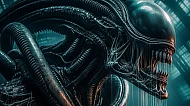
Exploring the Latest Trends in Slot Gaming
Despite notable advancements already, slot gaming continues to evolve at an impressive pace. These games blend technology and entertainment, throw in ...
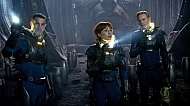
5 Alien Movies Every Sci-Fi Fan Student Must See - The Ultimate Watchlist for 2025-26
Read this article and explore the top 5 alien movies every sci-fi fan student must see in 2025–26. Explore thrilling stories, deep space adventures, and unforgettable cinematic moments in this ultimate watchlist.
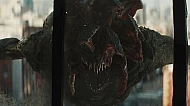
8 Must-Watch Horror Movies for Your 2025 Halloween Marathon
As daylight fades each autumn, a special feeling arrives; a comfortable shiver alongside buttery snacks. Looking for frights, suspense, or maybe just ...

